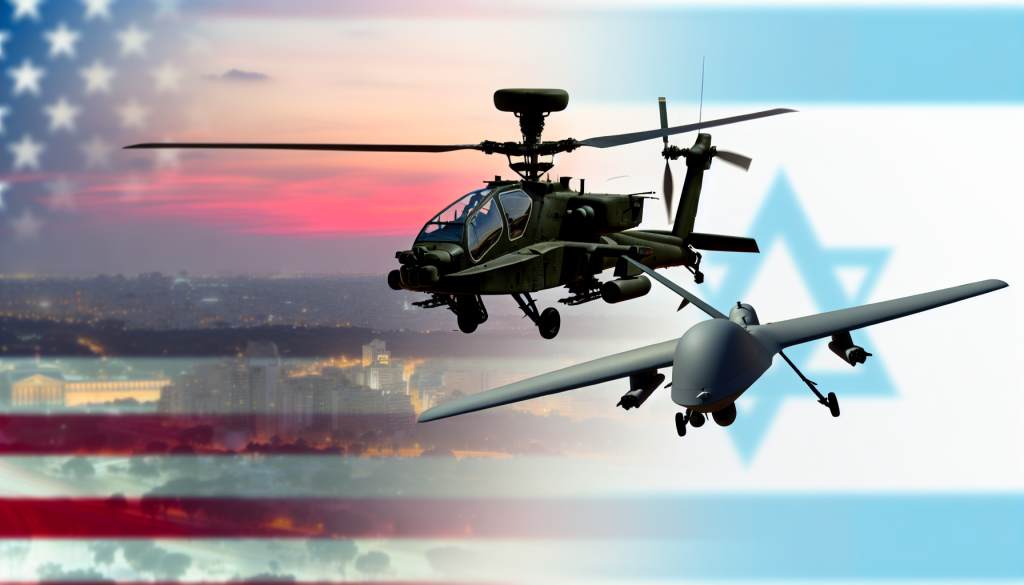Apache Helicopters vs Drones: A New Era in Aerial Warfare
In recent years, the dynamics of aerial combat have evolved dramatically, largely influenced by the rise of drone technology. The U.S. Army’s Apache helicopters, renowned for their capabilities in engaging armored targets, are now facing a new kind of adversary: drones. This article delves into the various facets of this aerial contest, examining recent developments, field tests, and evolving strategies employed by military powers.
The Apache Helicopter: A Brief Overview
The Apache helicopter, primarily used by the U.S. Army, is designed for anti-tank missions. Equipped with advanced sensors and weaponry, it excels in detecting and engaging armored vehicles. Initially deployed in the 1980s, its capabilities have continually been upgraded, making it a formidable asset on the modern battlefield. The integration of technology, including night vision and targeting systems, has allowed the Apache to dominate various combat scenarios.
Drones: The New Threat in the Sky
Drones have rapidly transformed warfare by providing a cost-effective and flexible means of surveillance and attack. Their ability to fly at altitudes that are often beyond traditional radar detection provides an advantage. Drones can be deployed in large numbers, overwhelming even the most formidable targets. In recent conflicts, drones have been used for reconnaissance, precision strikes, and even as loitering munitions, making them a versatile tool in modern combat.
The Need for Adaptation
As drone technology continues to evolve, military strategies must adapt correspondingly. The U.S. Army’s focus has shifted to developing counter-drone measures and enhancing Apache capabilities. This includes incorporating systems that can detect, track, and neutralize drone threats. The combination of Apache helicopters with anti-drone technology is not merely a reaction; it signals a full restructuring of aerial combat tactics.
Recent Tests: Apache vs. Drones
Recent field tests have seen Apache helicopters engaging in simulated attacks against drone swarms. These tests are critical in assessing the helicopter’s effectiveness in countering drone threats. The Apache’s advanced targeting and weapon systems enable it to engage multiple drones simultaneously, showcasing its potential in future conflicts.
Israel has been on the forefront of drone warfare and countermeasures, employing its advanced military technology to shoot down enemy drones effectively. The cooperation between Israel and the U.S. in testing these capabilities illustrates a united effort to tackle this evolving threat.
Technological Innovations
To combat drone threats, military developers are exploring several innovative technologies:
Signal Jamming
One approach involves the use of electronic warfare to disrupt drone communication. Signal jamming can effectively neutralize a drone’s ability to receive commands, rendering it inactive. The Apache’s electronic warfare suite allows it to deploy these tactics while maintaining operational flexibility.
Armed Drones
The development of armed drones that can engage enemy drones autonomously is another area of growth. These drones can provide support to Apaches, working in tandem to mitigate the risks posed by enemy assets.
Advanced Fire Control Systems
Enhanced targeting systems on Apaches enable pilots to prioritize threats efficiently. Integrating drone detection capabilities allows pilots to identify and engage aerial threats with heightened precision, further solidifying the Apache’s role in modern combat scenarios.
The Future of Aerial Warfare
The ongoing arms race between traditional aircraft like the Apache and emerging drone technology highlights a significant shift in aerial warfare. Military strategies will continue to evolve as technologies collide and integrate. The Apache has been a tried-and-true asset, proving its worth over decades; however, the integration of counter-drone capabilities will be essential for its continued relevance on the battlefield.
Global Implications
The U.S. and its allies, recognizing the drone challenge, are investing heavily in research and development. Countries across the globe are either adapting existing military assets or developing new platforms that can cater to the changing landscape of warfare. This has implications for international security and defense strategies, as nations seek to bolster their aerial combat capabilities amidst growing technological advancements.
Tactical Collaboration
The collaboration between nations, particularly in the testing and deployment of Apache helicopters against newer drone technology, indicates a broader shift towards unified defense strategies. Countries like Israel are not only testing but also sharing technological advancements, leading to a collective improvement in counter-drone methodologies.
This exploration sheds light on the evolving battle between Apache helicopters and drones. As technology continues to advance, both sides must adapt to ensure that they remain effective. The implications of these developments are monumental, not only for military strategy but for the geopolitical landscape as a whole.

